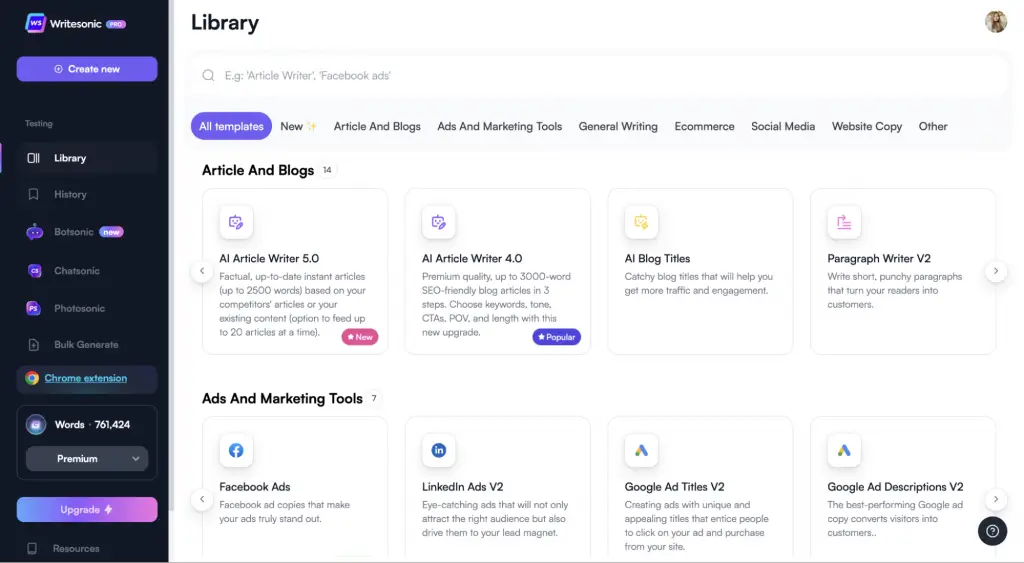
Is Writersonic the academic writer’s best ally? Explore our Writesonic review to discover how this tool elevates your academic writing prowess effortlessly.
AI-powered writing tools are transformative technologies designed to augment human writing capabilities. These tools employ advanced algorithms and natural language processing to assist users in generating content, improving grammar, suggesting ideas, and even structuring their work.
Writesonic is one such tool, leveraging artificial intelligence to aid in the creation of compelling written material.
This review aims to evaluate the tool’s suitability for academic writing, understanding its nuances and benefits within this specific context.
Table of Contents
What is Writesonic?
Writesonic is an AI-powered copywriting tool that helps users generate various types of written content, such as landing pages, product descriptions, blog posts, emails, ads, and more, by providing prompts and suggestions to streamline the writing process.
What Features Does Writesonic Offer Academic Users?
#1. AI Article and Blog Post Writer
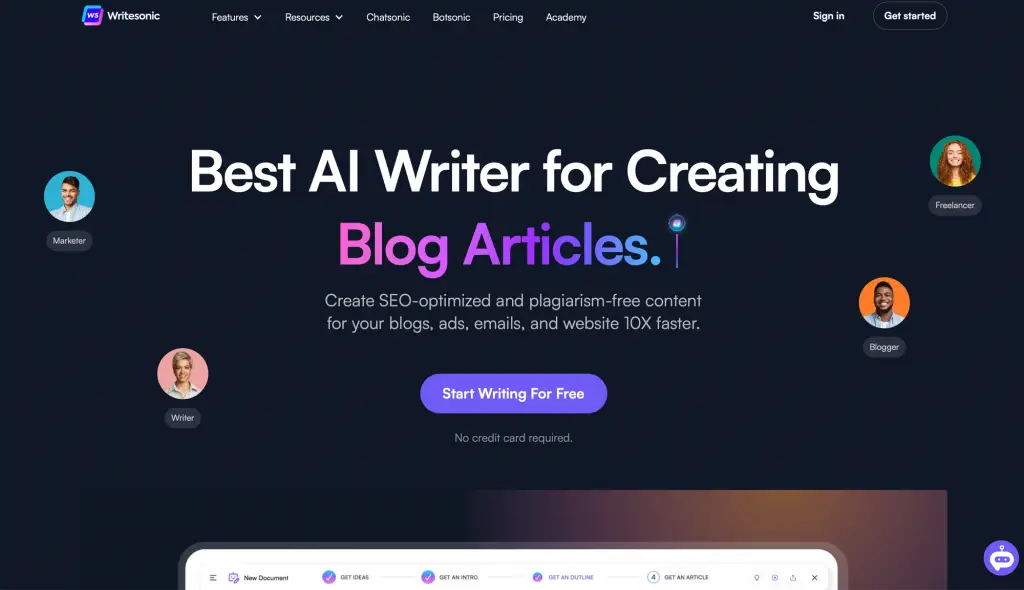
Picture this – you’re swamped with assignments and need a lifeline. Writesonic steps in as your trusty sidekick, generating well-researched articles, SEO meta descriptions, and blog posts on any topic you throw at it.
It’s like having a co-author that never gets tired and always has something insightful to add. You can tweak and fine-tune the output to match your unique style and requirements, saving you precious time and effort.
#2. Sentence Expander
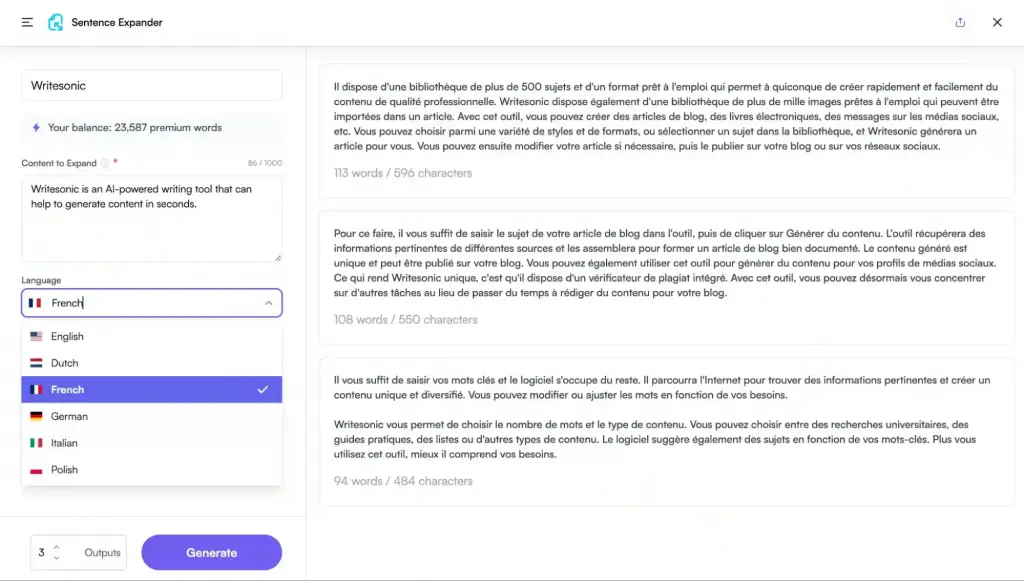
Sometimes, your ideas are like seeds waiting to bloom into beautiful paragraphs. Writesonic acts as the perfect gardener, helping you nurture and expand those sentences into rich, informative passages.
Whether you’ve got a sentence that’s a bit too brief or lacking depth, Writesonic stretches it out into something that impresses professors and adds substance to your work.
#3. Content Rephrase
Originality is key in academia. When you’ve got a piece of content that needs a fresh perspective or a different wording, Writesonic swoops in to save the day.
It can cleverly rephrase and restructure your sentences, ensuring your work is authentic and avoids any hint of plagiarism. It’s like having a master wordsmith to give your writing a unique and original twist.
#4. Quora Answers
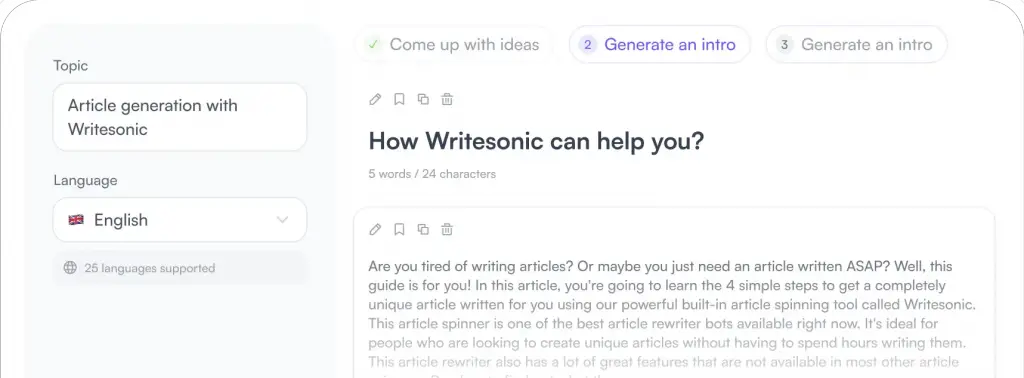
Research is a vital part of any academic endeavor. Quora is a treasure trove of knowledge and opinions. Writesonic helps you craft insightful and informed Quora answers, showcasing your expertise and engaging with a broader audience. Your answers become a beacon of knowledge, attracting curious minds and earning you recognition in academic circles.
#5. Ads and Marketing Tools
In the academic world, presentation matters. Whether it’s promoting your research or presenting your findings, Writesonic offers tools to create compelling ads and marketing materials. It ensures that your academic endeavors are packaged in a way that grabs attention and effectively communicates your message, giving your work the visibility it deserves.
#6. Website Copy
Your academic projects often need an online platform to shine. Writesonic helps you craft persuasive and captivating website copy that not only informs but also entices readers. From personal academic portfolios to project websites, Writesonic ensures that your online presence is professional, engaging, and leaves a lasting impression.
#7. Sentence Shorteners
Sometimes, less is more. Writesonic comes to the rescue when you’ve got a long-winded sentence that needs a trim. It shortens your sentences without losing the essence, helping you maintain clarity and conciseness in your writing. Your readers will appreciate the straightforward and easily digestible content.
#8. Sonic Editor

Sonic Editor provides advanced editing capabilities, allowing users to easily manipulate and refine their written content. In an academic setting, this could be useful for students and researchers when drafting essays, research papers, or reports.
#9. Article Summarizer

Let’s face it, academic articles can be lengthy and sometimes overwhelming. Writesonic acts as your reader’s digest, summarizing complex articles into concise, digestible nuggets of information. It allows you to grasp the main points and arguments without diving into the entire article, making your research process more efficient and effective.
#10. Chatsonic

This Writersonic’s ChatGPT, offers real-time guidance and assistance to students and researchers in academia. Whether users seek clarifications, brainstorming sessions for projects, or need feedback on their academic writing, Chatsonic serves as a conversational interface.
It provides a platform for discussing ideas, reviewing drafts, improving language and writing style, and navigating the intricacies of research and citation. This interactive tool enhances the academic experience by offering immediate support and fostering engagement in the learning process.
How Does Writesonic Enhance the Academic Writing Experience?

#1. Content Generation and Ideas
Writesonic uses AI to generate content based on given prompts or topics. For academic writing, this can be immensely helpful in generating ideas, creating outlines, or drafting sections of a paper. It can suggest introductory paragraphs, supporting arguments, and even conclusions.
#2. Research Assistance
Writesonic may help in gathering relevant information and data by providing suggestions or snippets based on the topic. It can assist in finding references, facts, and figures that can be incorporated into the academic work.
#3. Language Enhancement
Writesonic often offers grammar and spell-checking capabilities to ensure the written content is free of errors. It may suggest alternative phrasing to improve clarity, coherence, and overall readability, which is crucial in academic writing.
#4. Time Efficiency
By automating the content generation and editing process, Writesonic can save time for researchers and students. This allows them to focus on other aspects of academic writing, such as critical analysis, in-depth research, or revising and polishing the content.
#5. Tone and Style Assistance
Writesonic may provide options for adjusting the tone and style of the content, aligning it with the specific requirements of academic writing. This includes formal, persuasive, informative, or academic styles based on the purpose of the paper.
#6. Improving Structure and Organization
Writesonic might assist in organizing the academic paper by suggesting a logical structure, subheadings, and transitions between paragraphs, ensuring a coherent and well-structured flow of information.
#7. Customization and Personalization
Depending on the specific requirements of the academic task, Writesonic may allow users to customize and tailor the content generation to suit their needs, ensuring the academic paper aligns with the desired format and guidelines.
How is Writesonic Priced and What Plans Does It Offer?

Writesonic offers a range of pricing plans to cater to different user needs and requirements. The pricing is structured to accommodate a variety of users, from individuals to small teams and enterprises. Here’s an overview of the pricing tiers and the features they offer:
Forever Free
Writesonic provides a “Forever Free” plan that allows users to access a basic set of features without any charge. The features included in this plan are:
- Chatsonic: ChatGPT-like chatbot
- AI Article Writer 4.0
- Sonic Editor: An advanced editor similar to Notion AI but with enhanced capabilities
- Photosonic: AI Image Generator
- Complete Article Rewriter
- Browser Extensions
- 100+ AI Templates
- 1-Click WordPress Export
- Zapier Integration
- Support for 30 Languages
Small Team – Starting at $15 per month
For small teams, Writesonic offers a plan starting at $15 per month, providing access to all the features available in the Forever Free plan, along with additional enhancements. The features included in this plan are:
- Increased word limit
- Unlock GPT-4 and GPT-4 32K
- Factual and Personalized Article Writer (AI Article Writer 5.0), utilizing GPT-4 32K
- 5 Brand Voices
- Higher quality image generation + Upscaling
- API Access
- Bulk Processing
- Priority access to new features
- Priority Support
Freelancer – Starting at $16 per month
The Freelancer plan, starting at $16 per month, is designed to cater to individual freelancers and professionals. It includes all the features available in the Forever Free plan, plus:
- No word limit
- Chatsonic: ChatGPT-like chatbot
- AI Article Writer 4.0
- Sonic Editor (Like Notion AI but better)
- Photosonic (AI Image Generator)
- Complete Article Rewriter
- Browser Extensions
- 100+ AI Templates
- 1-Click WordPress Export
- Zapier Integration
- Support for 30 Languages
Enterprise – Starting at $500 per month
For larger enterprises and businesses with advanced needs, Writesonic offers the Enterprise plan, starting at $500 per month. This plan encompasses all features from the Small Team plan and adds more tailored features and services:
- SSO/SAML Login
- Custom templates tailored to your business
- Priority AI Processing
- Customer Success Manager
- Training Sessions
- User Provisioning via SCIM (Coming soon)
- Audit Log (Coming soon)
- Workspace Analytics (Coming soon)
- Premium Support
The variety of plans and features allow users to choose a pricing tier that aligns with their specific needs and budget, ensuring they have access to the right set of tools for their writing and creative requirements.
How Does Writesonic Compare to Other Writing Tools?
| Writesonic | ChatGPT | Jasper Al | |
| Starting Price (per month) | $15 | $20 | $39 |
| Most notable feature | Chatonic | Image analysis | Brand voice |
| No. of Supported Languages | 24+ | 50+ | 30+ |
| Notable integrations | Zapier | Microsoft Excel | Google BigQuery |
| Availability of free trial | Yes | Yes | Yes |
| Customization and personalization | Yes | Yes | Yes |
| Limitations | Not good for long-form content | Limit on GPT-4 usage (50 messages every 3 hours) | Has a learning curve |
Writersonic Vs. Jasper AI
Price
Writesonic starts at $15 per month, making it more affordable than Jasper AI, which starts at $39 per month. The lower price point for Writesonic could be a significant factor for individuals or students on a tight budget, especially for academic writing needs.
Usability in Academic Writing
Both Writesonic and Jasper AI are AI-powered writing tools that aim to assist users in generating content, including academic writing. However, the usability in academic writing can vary based on each tool’s specific features and capabilities.
Writesonic, while more affordable, might still provide sufficient functionality for general academic writing, including grammar checking, sentence structuring, and content generation. However, it may lack some specialized academic features present in more expensive alternatives.
My Pick
If cost is a significant factor, Writesonic might be a more attractive option due to its lower starting price. However, if advanced academic writing features and more comprehensive assistance are required, Jasper AI might be worth the higher investment, given its potentially specialized capabilities in academic writing.
What Are the Best Alternatives to Writesonic?

#1. Copy AI
Overview: Copy AI is a versatile content generation tool that provides assistance across a range of writing needs.
Key Features: It offers templates for various content types, making it easy to create social media posts, blog content, and more.
#2. ChatGPT
Overview: ChatGPT is an AI-powered language model developed by OpenAI, designed for natural language understanding and generation.
Key Features: It excels in providing contextually relevant responses and can be used for chatbots, customer support, and content generation.
#3. Sudowrite
Overview: Sudowrite, created by AI21 Labs, is a writing assistant tool that focuses on enhancing your existing content.
Key Features: It offers real-time writing suggestions, grammar and style improvements, and feedback to help you refine your writing.
#4. Jasper AI
Overview: Jasper AI is a content generation platform known for its versatility and content creation capabilities.
Key Features: It can generate a wide variety of content, including ad copies, blog posts, and more.
How Do Users Experience Writesonic?
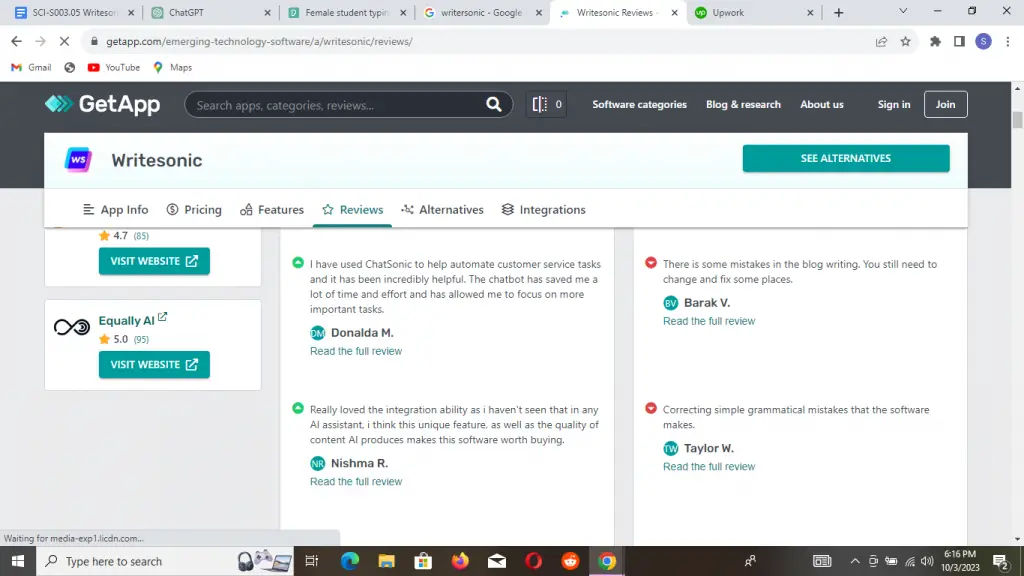
Users rave about Writesonic for its remarkable integration ability and the exceptional quality of content it generates.
One user expressed their admiration, stating, “Really loved the integration ability as I haven’t seen that in any AI assistant. I think this unique feature, as well as the quality of content AI produces, makes this software worth buying.”
Writesonic has proven to be a game-changer for various tasks, particularly in automating customer service. A satisfied user shared, “I have used ChatSonic to help automate customer service tasks, and it has been incredibly helpful. The chatbot has saved me a lot of time and effort and has allowed me to focus on more important tasks.”
What Are the Pros and Cons of Using Writesonic for Academic Writing?
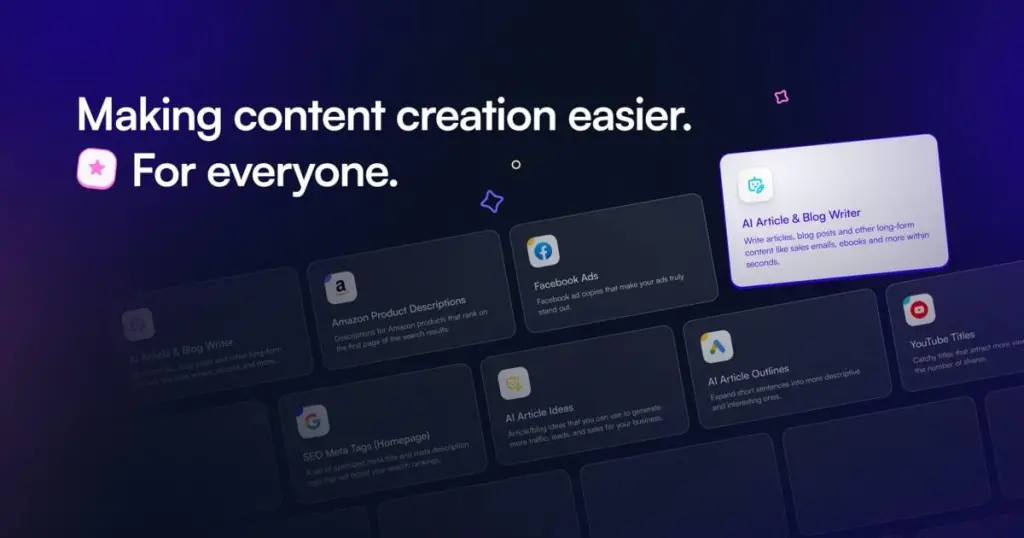
Pros
#1. Time Saver
Writesonic can be a real time-saver. It can generate content quickly, which can be a lifesaver when you have tight deadlines for your academic papers.
#2. Idea Generation
It’s fantastic for sparking ideas. Sometimes you’re just staring at a blank page, and Writesonic can help kickstart your thought process.
#3. Variety of Content
It can generate different types of content, from essays to summaries, so you’re not limited to one format.
#4. AI Assistance
You get AI-powered assistance. Writesonic can suggest improvements, help with sentence structure, and even offer vocabulary suggestions to enhance your writing.
Cons
#1. Over-Reliance Risk
There’s a danger of leaning too heavily on Writesonic. If you use it for everything, your own writing skills might start to gather cobwebs.
#2. Quality Control
While it’s great at generating content, it doesn’t always hit the bullseye in terms of accuracy or relevance. You still need to double-check and tweak.
#3. Subscription Cost
Like most good things, it comes at a price. Subscription costs can add up, especially for students on a tight budget.
#4. Learning Curve
Initially, navigating the tool might take a bit of getting used to. It’s not as intuitive as some other writing platforms.
So, it’s like having a writing buddy that’s speedy and versatile, but you’ve got to be the captain of the ship, steering it in the right direction. Balance is key! ☕️🚀
What Tips and Best Practices Can Optimize Writesonic for Academic Users?

1. Understand the Platform
Before utilizing Writesonic for academic writing, it’s crucial to thoroughly understand its functionalities, features, and limitations. Familiarize yourself with the available tools, options, and the types of content it can generate. This understanding will help you tailor your expectations and utilize the tool more effectively.
2. Clearly Define Objectives
Articulate your writing objectives and requirements clearly. Specify the purpose of your academic writing, the intended audience, the desired style (e.g., informative, persuasive), and any particular guidelines you need to follow (e.g., specific formatting styles, word count). Providing a clear direction helps Writesonic generate content that meets your academic goals.
3. Provide Detailed Instructions
When using Writesonic, be detailed in your instructions. Clearly define the topic, keywords, and any specific information or data you want to include. If you have formatting preferences such as headings, subheadings, or bullet points, make sure to communicate them. The more precise your instructions, the more accurate the generated content will be.
4. Review and Revise Generated Content
Even though Writesonic can produce content efficiently, it’s essential to review and revise the generated text. Check for factual accuracy, coherence, and relevance to your academic context. Ensure that the content aligns with the guidelines and criteria you’ve defined for your academic writing.
5. Use as a Writing Prompt Generator
Writesonic can serve as a useful writing prompt generator. If you’re struggling to start a piece of academic writing, use Writesonic to generate introductory paragraphs or topic ideas. The AI-generated content can provide you with a foundation to build upon and develop your thoughts.
6. Verify and Cite Sources Independently
While Writesonic can suggest sources and information, it’s essential to independently verify the accuracy and credibility of these sources. Additionally, ensure you properly cite all sources used in your academic writing according to the required citation style (e.g., APA, MLA).
7. Incorporate Critical Thinking and Analysis
Remember to apply your own critical thinking and analysis to the content generated by Writesonic. Use the AI-generated text as a starting point, but enhance it with your interpretations, evaluations, and original arguments. This ensures your academic work reflects your unique perspective and understanding of the topic.
8. Leverage for Time Efficiency
Writesonic can help expedite the initial stages of content creation. Utilize it to quickly generate drafts or outline ideas, saving time that you can allocate to more in-depth research, data analysis, or fine-tuning your academic writing to meet high-quality standards.
9. Experiment and Iterate
Experiment with different prompts, styles, and input variations when using Writesonic. Observe how the AI responds and iterate based on the results. Tailoring your approach to the tool and understanding how it interprets your instructions will help you achieve better outcomes.
My Verdict
After thoroughly exploring the capabilities of Writersonic, I am impressed with its efficiency, versatility, and cost-effectiveness.
As an academic, finding a reliable writing assistant is crucial for managing research papers, articles, and various academic projects. Writersonic stands out as an exceptional budget solution for academics seeking a reliable AI-powered writing tool.
1. Efficient and Intuitive
Writersonic streamlines the writing process with its intuitive interface and efficient algorithms. It offers a range of writing styles, making it adaptable for various academic requirements, from literature reviews to dissertations.
2. Affordable Solution
One of the standout features of Writersonic is its affordability. Academics often operate on tight budgets, and Writersonic provides a cost-effective solution without compromising on quality. The pricing plans make it accessible to researchers, students, and educators alike.
3. Reliable Writing Assistance
Writersonic consistently delivers accurate and coherent suggestions, aiding in content refinement and ensuring clarity in academic writing. The AI-powered features assist in brainstorming ideas, structuring content, and enhancing the overall quality of academic documents.
4. Time-Saving and Productive
With Writersonic, I found myself saving significant time in generating drafts and fine-tuning my academic work. The AI’s prompt responses and constructive recommendations expedited the writing process, allowing me to focus on research and analysis.
Conclusion
For academics seeking a budget-friendly yet reliable writing assistant, Writersonic proves to be an excellent choice. Its affordability, efficiency, and user-friendly interface make it a valuable tool for researchers, students, and educators striving for enhanced productivity in their academic endeavors.
Frequently Asked Questions
Q1: What is Writersonic?
Writersonic AI writing tool is an advanced artificial intelligence-powered platform designed to assist users in creating high-quality written content for various purposes. It employs AI algorithms to generate, edit, and optimize text, making the writing process more efficient and effective.
Q2: How does Writersonic work?
Writersonic AI writing tool uses natural language processing and machine learning to analyze input and generate relevant and coherent text based on the given context and parameters. It can help users with drafting articles, creating marketing copy, generating creative content, and more, adapting to specific writing styles and requirements.
Q3: What features does Writersonic offer?
Writersonic AI writing tool offers features such as content generation, grammar and style checking, keyword optimization, tone customization, and topic suggestion. Users can input their writing goals, target audience, and preferred writing style to tailor the generated content accordingly.
Q4: Can Writersonic be integrated into existing writing workflows?
Yes, Writersonic can be seamlessly integrated into existing writing workflows and applications. It often offers APIs or integrations that allow users to access and utilize its capabilities within their preferred writing platforms, content management systems, or other relevant tools.
Q5: Is there a free plan available for Writersonic?
Yes, Writersonic offers a free plan that provides limited access to its core features. This plan allows users to experience the platform, generate basic content, and explore its capabilities without any cost. However, it may have certain limitations compared to the paid plans, which offer enhanced features and broader functionality.
References


